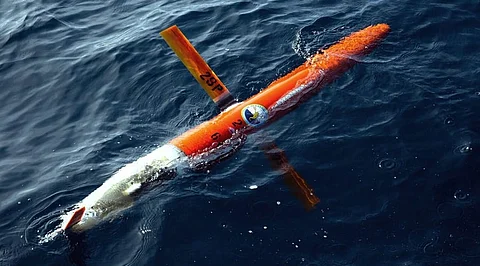

Robots intervention in today's world is well-accepted as a smarter tool by people. The main era of robotic research and development was the mid-20th century. Robots started evolving from there as an industrial help mechanism to the current amphibious robots.
Robotics is changing the way humans function. Robots are slowly invading every sector like manufacturing, healthcare, delivery, education, space exploration, etc. Scientists and researchers working on robotics are paying equal importance to ultra-large as well as microrobots. The trending talk in the industry is autonomous mobile robots that automate most of the human work without actual human intervention. Recently, a video of an old building in Shanghai being relocated by a walking-style robot gained wide traction in social media. However, the emerging technology in today's robotics is amphibious robots that could make a big change in space functionalities.
Amphibious robots or amphibots are the robots which have mobility in both land and water. Amphibious robots are very attractive for their broad applications in resource exploration, disaster rescue, and reconnaissance. However, it is very challenging to develop the robots as they have to be featured with a lot of versatile mechanisms. In the complex amphibious environment, the robots should possess multi-capabilities to walk on rough ground, manoeuvre underwater, and pass through transitional zones such as sandy and muddy terrain. These capabilities require high-performance propulsion mechanism for the robots. Henceforth, a hybrid model is used to explore the dynamics between the transformable legs and transitional environment such as granular medium. In autonomous defence surveillance applications, the robots have to move in various platforms and surfaces. In ocean sea-shores, the robots have to navigate in rock-solid terrains and sandy beaches. Ultimately, amphibious robots have the main advantage in this entire stance. Some of the pros of amphibious robots are,
• They are very powerful
• Amphibious robots are easy to handle
• The robots have an easy fabrication mechanism
Amphibious robots are capable of walking and swimming in both water and ground. Compared with traditional robots, amphibious robots can work in a variety of different environmental conditions. It can play a pivotal role in resource exploration, payload transport, life rescue and much more.
Conventionally, amphibious robots have utilized separate systems for aquatic and terrestrial locomotion, such as rotors and wheels. Recent approaches have attempted to consolidate the propulsive mechanism footprint and complexity in hopes of creating systems that mirror the performance and adaptability of living organisms. Amphibious robots approach this challenge in a segmented way by sorting four distinct categories: wheeled, legged, undulating and soft. These divisions are based on their locomotion mechanisms and body plans.
The inspiration behind amphibious robots is the biometrics of fishes and cetaceans use of fins as an efficient propulsive model in under-water applications. An amphibious probing and surveillance system with the camera is structured in such a way that it has to perform many demanding tasks in underwater, various terrains and weather conditions.
AmphiSTAR: AmphiSTAR is designed by the researchers at Ben-Gurion University of the Negev (BGU). The robot was presented at the International Conference on Intelligent Robots and Systems (IROS) by Dr David Zarrouk, director of Bioinspired and Medical Robotics Laboratory in BGU's Department of Mechanical Engineering.
AmphiSTAR was inspired by cockroaches and lizards and is designed to run on water at high speeds. The researchers expect the robot to be used for agriculture, search, and rescue and excavation operations. AmphiSTAR is powered with wheels and four propellers underneath it. The sprawl mechanism can be used to tilt the axes. When the robot is on the ground, the propeller act as wheels, and when the robot is over water, they act as fins.
Velox robot: The US Company Pliant Energy has turned one of its green energy technologies into a propulsion system for a swimming robot capable of exploring land and sea. The Velox robot can move through water as well as sand, pebbles, snow, ice and other solid ground.
Pliant Energy initially developed the fins of the Velox as a system for generating electricity from rivers. It turned out to be a propulsive thrust for swimming robots as they are easily mobile.
Historically, the role of robotics in space exploration has been significant due to the uninhabitable conditions of non-terrestrial planets in the solar system. NASA researchers aim to make the flying amphibious robots capable of rolling, flying, floating and swimming as it explores space and planets. The researchers expect an amphibious robot to roll and split into two pieces. After splitting, the two halves rise on small propellers, effectively becoming flying drones for aerial exploration. NASA is planning to deploy them at Saturn's moon.
Join our WhatsApp Channel to get the latest news, exclusives and videos on WhatsApp
_____________
Disclaimer: Analytics Insight does not provide financial advice or guidance. Also note that the cryptocurrencies mentioned/listed on the website could potentially be scams, i.e. designed to induce you to invest financial resources that may be lost forever and not be recoverable once investments are made. You are responsible for conducting your own research (DYOR) before making any investments. Read more here.
